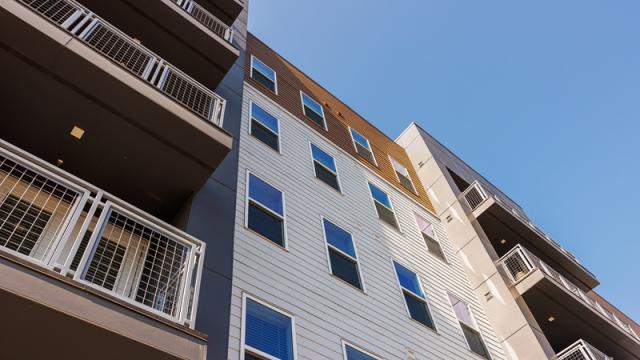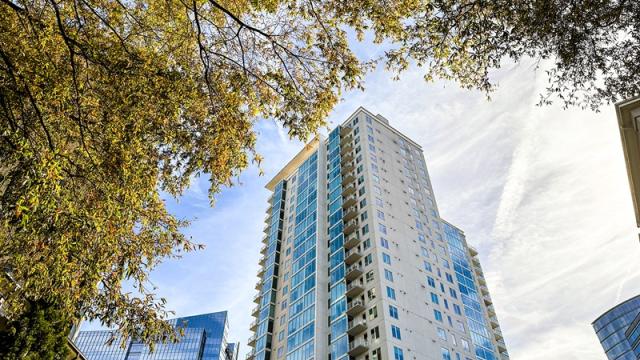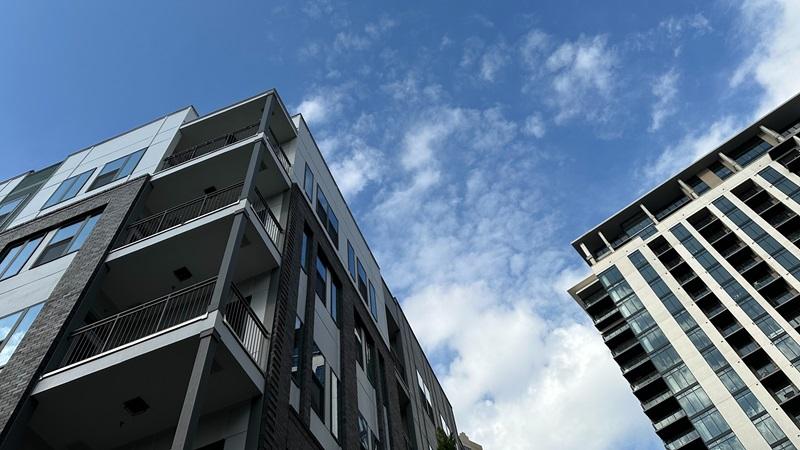
At the national level, rent growth has plateaued around 1 percent. Year-over-year asking rent growth has hardly budged since mid-2023, only alternating between 1.1 and 1.2 percent. As of the second quarter, national rent growth is expected to be 1.2 percent.
But this long-term stability belies the dramatic shifts that have occurred at the regional and market level. Sun Belt markets, once rent growth leaders during the pandemic, have struggled to emerge from negative territory. In contrast, Midwest and Northeast markets have surged ahead, posting rent growth far outpacing the national averages.
And as the second quarter of 2025 comes to close, a few markets from the West have shot up the rent growth charts. As of early June, how do the major multifamily markets stack up? Here’s a look at the top performers for rent growth, according to the latest CoStar data.
1. San Francisco, CA

After minimal rent growth in 2024, the San Francisco multifamily market has skyrocketed to the top of the chart, outperforming the leading Midwest markets. With an estimated year-over-year rent growth rate of 5.6 percent for the second quarter, San Francisco has seen rents grow by a rate more than four times the national average.
At the same time, the multifamily vacancy rate has gradually declined from around 6 percent last year to fall just under 5 percent this quarter.
Demand in the San Francisco market, which spans the city itself and the surrounding peninsula, has grown, thanks to an increase in population growth, return to the office, and improvements in the quality-of-life issues that had contributed to a population exodus. The reversal of these trends, paired with the market’s limited supply, has driven the dramatic rise in rent growth.
San Francisco remains the most expensive multifamily market by rent per square foot, topping the charts at $4.47 and ahead of runner-up New York City’s $4.27. One-bedroom apartments in San Francisco average an asking rent just shy of $3,000.
2. Chicago, IL

The capital of the Midwest, Chicago has been delivering strong rent growth over the last few years. The Chicago multifamily market, which includes the Chicagoland suburbs, ranked in the top 20 major markets for rent growth throughout 2024.
For the second quarter of 2025, Chicago’s year-over-year rent growth is expected to reach 4.3 percent, nearly a whole percentage jump from the 3.5 percent rent growth it posted in the first quarter.
As one of the largest multifamily markets in the country, with a population of nearly 10 million, Chicago enjoys two advantages: strong demand and limited supply-side pressure. New multifamily development in the Windy City has been minimal and has been on the decline. In a market with approximately 572,000 units total, only about 8,000 multifamily units are currently under construction.
3. San Jose, CA
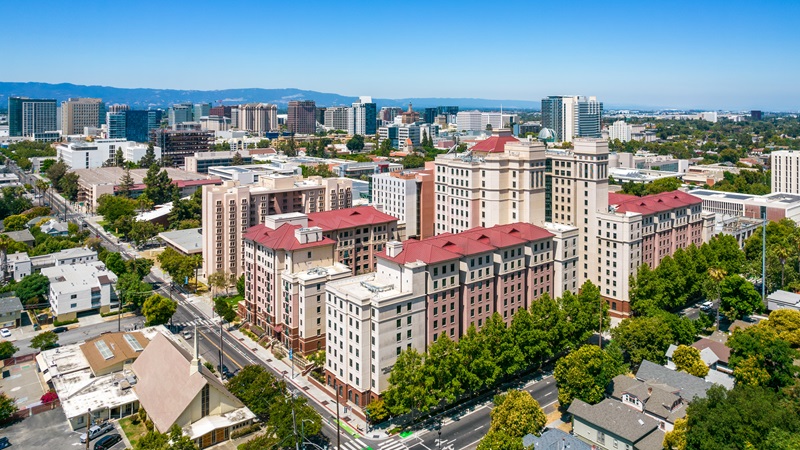
One of only two markets in the West to rank in the top 10, San Jose has seen asking rents climb in recent quarters. Like its neighbor San Francisco, this Bay Area market has benefited from a combination of rising demand and limited supply, driving its rent growth up to 3.5 percent in the second quarter.
The San Jose market, which includes most of Silicon Valley, is one of the most expensive rental markets in the country, with asking rents averaging $3.82 per square foot. Only San Francisco and New York City have higher asking rents.
Despite a recent rise in development, rental demand in San Jose has remained strong. Construction increased following the pandemic, with an average of 6,000 units under construction throughout 2023 and 2024. The construction pipeline has since dropped off — less than half as many units are currently under construction — and demand has quickly absorbed the new supply.
The San Jose multifamily market enjoys a strong tech sector and tight housing market, driving up demand for apartments. Looking ahead, San Jose’s prospects for rent growth remain strong. The slowing construction pipeline is expected to further lessen supply-side pressures, and the AI boom has increased capital investment in local tech companies.
4. Cincinnati, OH

Like many markets in the Midwest, Cincinnati has maintained steady rent growth following the pandemic. Unlike the dramatic rise and fall of asking rents in the Sun Belt, Cincinnati has consistently maintained positive rent growth throughout the last decade — never falling below 2.5 percent.
And for the last four years, year-over-year rent growth in Cincinnati has outperformed the national average every quarter. For the second quarter of this year, rent growth in Cincinnati is expected to reach 3.2 percent.
Although vacancy is relatively high, at 7 percent for the second quarter, rent growth has remained relatively strong.
The Cincinnati market, which includes the suburbs surrounding the city, has seen construction accelerate since the pandemic. Before 2020, the number of under-construction units never rose above 4,000. Since then, it has averaged 5,000, peaking in mid-2022 with over 6,500 units.
Despite the rise in supply, Cincinnati enjoys strong demand. The area remains an affordable metro with a strong job market, and the population has grown from 2.2 million in 2015 to 2.3 million today, even as other major metropolitan areas have seen their populations decline. These factors, along with the slowdown in new deliveries, position Cincinnati to see rent growth continue in the quarters ahead.
5. Pittsburgh, PA

Estimated to reach 3.1 percent in the second quarter, rent growth in the Pittsburgh multifamily market continues to accelerate, outperforming the national average by nearly a factor of three. Rent growth has been on an upward trend in Pittsburgh since bottoming out at 1.2 percent in late 2023.
The Pittsburgh multifamily market, which encompasses the Pittsburgh metropolitan area, has benefited from a limited construction pipeline. This factor has helped Midwest and Northeast markets rise to the top of rent growth charts in recent years.
There are fewer than 3,000 new multifamily units currently under construction in Pittsburgh. This represents a lower share of inventory than the national benchmark of 3 percent.
As of the second quarter, vacancy stands at an estimated 6.2 percent. The slowing construction pipeline is expected to support rent growth, but on the demand side, the Pittsburgh market faces the risks of a declining population and weakening job market.
6. Norfolk, VA

Close behind the Pittsburgh market with rent growth of 3.1 percent, the Norfolk multifamily market ranks sixth as of the second quarter. This multifamily market, which also goes by the name Hampton Roads, has seen rent growth slowly creep up since the middle of 2024. At the same time, vacancy has fallen to 5.9 percent.
These trends can be attributed to a slowing construction pipeline. As of the latest CoStar data, only 1,500 multifamily units are currently under construction in the Norfolk market. This represents about 1 percent of the total multifamily inventory — far below the national benchmark of 3 percent. New multifamily construction in Norfolk peaked in 2023 and has been declining since.
7. Boston, MA

With rent growth estimated to reach 2.9 percent this quarter, the Boston multifamily market reflects the strong performance of the Northeast region in recent years.
As national rent growth has plateaued around 1 percent and vacancy has hovered around 7 and 8 percent, the Boston market has shown a strong performance in comparison. At 5.8 percent, vacancy in the Massachusetts capital is well below the national average.
At the onset of the pandemic, Boston saw rent growth dip into negative territory and then climb up to a peak of 8.7 percent in 2022. Since then, rent growth has moderated but remained above the national average.
8. Cleveland, OH
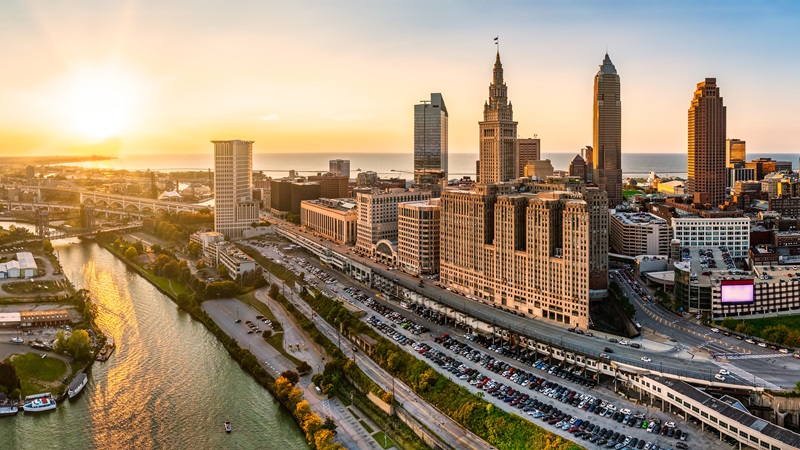
Rent growth in Cleveland has decelerated, but at 2.8 percent, it continues to remain above the national average.
Since 2023, Cleveland has led the nation as a rent growth leader, outperforming the national average. In recent quarters, however, its rate of growth has slowed, falling from 3.3 percent in mid-2024 to under 3 percent this year.
At the same time, vacancy in the Cleveland market has risen. As of the second quarter, Cleveland has a higher vacancy rate than the national average: 8.5 percent compared to the national benchmark of 7.9 percent.
While Cleveland’s construction pipeline remains modest relative to national trends, the recent rise in newly delivered units has weakened rent growth compared to last year.
In the quarters ahead, rent growth is expected to continue to remain near 3 percent, above Cleveland’s pre-pandemic average.
9. Kansas City, MO

The Kansas City multifamily market has followed a similar trajectory to Cleveland. Rent growth has slowed this quarter, though it continues to outpace the nation, and Kansas City remains in the top 10 major markets for rent growth. Rent growth has decelerated to 2.8 percent, and at 7.9 percent, multifamily vacancy in Kansas City is in line with the national average.
Despite the rise in asking rents, Kansas City continues to be one of the nation’s more affordable major multifamily markets, with asking rents averaging $1.49 per square foot. Along with Cleveland, it ranks among the 10 least expensive major rental markets.
In the quarters ahead, Kansas City is expected to maintain a healthy balance between supply and demand, keeping it ahead of the nation. Even as the construction pipeline remains slightly above the national benchmark, this metro has seen its population continue to grow year over year over the last decade, a trend that is unlikely to reverse.
10. New York, NY

Thanks to high demand and limited new development, the New York multifamily market has long maintained an extremely low vacancy rate — one of the key features of this unique multifamily market. As of the second quarter, New York continues to hold the lowest vacancy rate in the country, at 2.7 percent. At the same time, its rent growth has crept upwards, earning this multifamily market a spot in the top 10 for rent growth.
The New York market — which includes the city itself as well the surrounding area extending from Orange County in the north to New Jersey’s Ocean County in the south — is expected to post rent growth of 2.7 percent in the second quarter. This is over double the national average of 1.2 percent.
The New York metropolitan area added 213,000 residents in 2024, including 87,000 in New York City. Within the last year, new deliveries have risen to over 30,000 units — a high not seen within the last decade — but construction starts have begun to fall. As a result, New York’s rent gains are likely to continue in the quarters ahead, as new supply is quickly absorbed in this competitive rental market.
Rent growth in New York fell into negative territory during 2020 but has remained positive since early 2021. The New York multifamily market has begun moving up the rent growth charts in recent quarters and is expected to hit the 3-percent mark this year.


